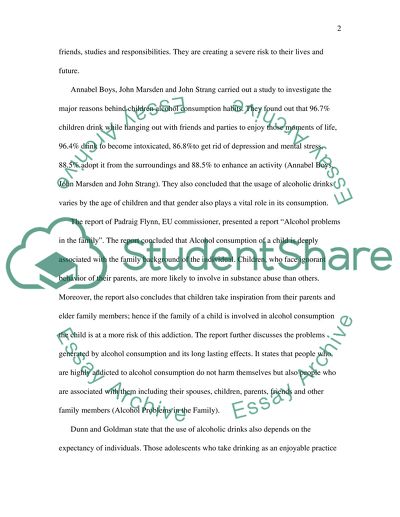Cite this document
(“Alcohol Consumption among Children Article Example | Topics and Well Written Essays - 2000 words”, n.d.)
Alcohol Consumption among Children Article Example | Topics and Well Written Essays - 2000 words. Retrieved from https://studentshare.org/sociology/1516970-alcohol-consumption-among-children
Alcohol Consumption among Children Article Example | Topics and Well Written Essays - 2000 words. Retrieved from https://studentshare.org/sociology/1516970-alcohol-consumption-among-children
(Alcohol Consumption Among Children Article Example | Topics and Well Written Essays - 2000 Words)
Alcohol Consumption Among Children Article Example | Topics and Well Written Essays - 2000 Words. https://studentshare.org/sociology/1516970-alcohol-consumption-among-children.
Alcohol Consumption Among Children Article Example | Topics and Well Written Essays - 2000 Words. https://studentshare.org/sociology/1516970-alcohol-consumption-among-children.
“Alcohol Consumption Among Children Article Example | Topics and Well Written Essays - 2000 Words”, n.d. https://studentshare.org/sociology/1516970-alcohol-consumption-among-children.


